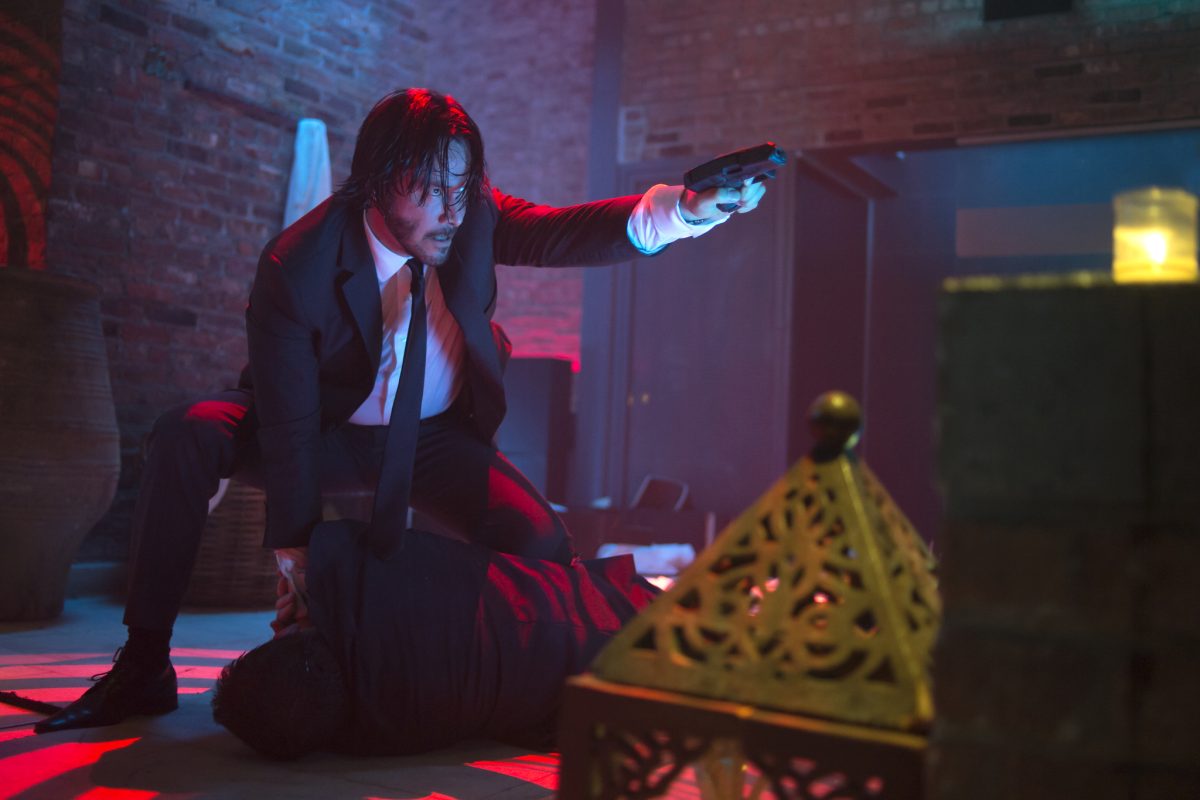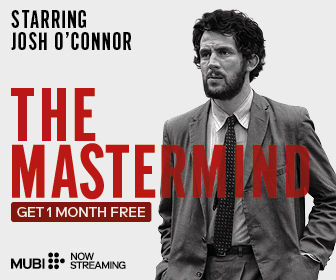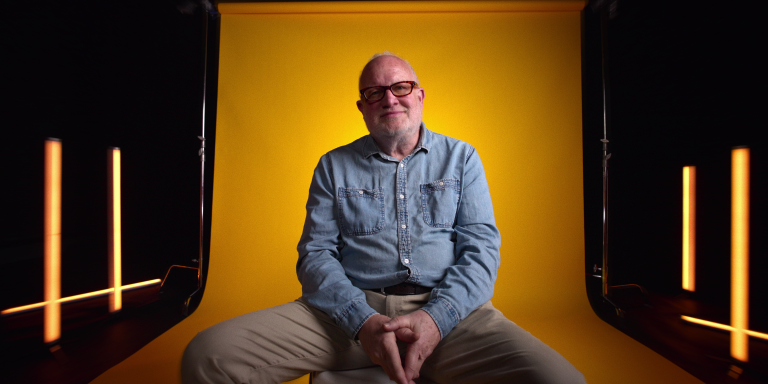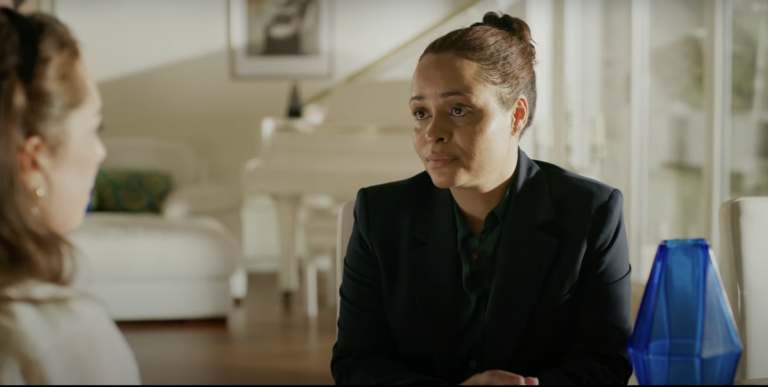John Wick (2014) begins as an intimate story of mourning before erupting into a relentless tale of vengeance. Recently widowed, John receives Daisy, a beagle puppy left to him by his late wife Helen—a living gift meant to help him navigate the silence of her absence. Daisy becomes more than a pet; she is John’s final thread to love, a fragile reminder of tenderness, and the faint possibility of a life untouched by violence.
That possibility shatters when Iosef Tarasov, the reckless son of a powerful Russian mob boss, murders Daisy and steals John’s cherished car. What begins as a meaningless act of cruelty rekindles the legend of the Baba Yaga—a name once whispered in fear throughout the criminal underworld. From this point, John Wick transforms into a meditation on grief, rage, and the futility of escaping one’s past. John’s rampage may appear as sheer revenge, but beneath the gunfire lies something deeper: each act of violence is a cry against loss, each bullet a release of sorrow. He is not merely striking at the Tarasovs, but at the void left by Helen, avenging the silence that grief has forced upon him.
Spoilers Ahead
John Wick (2014) Plot Summary & Movie Synopsis:
Why Does John Come Out of Retirement?
John’s life after Helen was one of solitude, defined by grief but cushioned by Daisy’s presence. When Iosef and his men invade his home, their brutality tears open wounds that had barely begun to heal. The puppy’s death is not just the loss of an animal. It’s the destruction of Helen’s final gift, the last fragment of peace John had left. By stealing John’s car and killing Daisy, Iosef unknowingly removes all barriers holding John back from his violent past. Viggo Tarasov himself acknowledges this: John Wick is not a man you cross unless you’re ready to face the consequences. What motivates John is not simply revenge but the reclamation of dignity, memory, and purpose. Daisy’s death is the spark that reawakens the Baba Yaga, but Helen’s absence is the fuel that keeps him moving forward.
What Role Does Viggo Play in John’s Return?
Viggo, as both a father and a mob boss, embodies the central conflict of family versus business. He knows better than anyone the danger John represents, having once employed him for an impossible task that earned John his freedom. Viggo’s anger at Iosef is layered with fear: he recognizes that his son’s arrogance has doomed them all. Despite trying to contain the fallout with bribes and hit squads, Viggo also succumbs to the same flaw as Iosef, underestimating John’s determination. His decision to double the bounty and involve John’s old allies only accelerates the chain of betrayals and deaths. Viggo represents the futility of trying to control chaos. Once John’s grief is weaponized, neither power nor money can stop him.
Why Does John Destroy Viggo’s Church Stash?
When John burns Viggo’s hidden reserves of money and blackmail material, it’s more than an attack on wealth. It’s symbolic; John is not bargaining, he is dismantling Viggo’s safety nets. For John, revenge cannot coexist with compromise. By targeting Viggo’s foundation of control, John communicates that his war is not about negotiation or survival. It’s about inevitability. This act also contrasts with John’s own stash of gold coins and weapons. Whereas Viggo hoards wealth as a shield, John retrieves his weapons for a purpose. His past life was buried in the concrete beneath his home, but now, with nothing left to lose, he digs it up, not for profit, but for closure.
Why Does Marcus Help John?

More From the Franchise: Top 10 Action Scenes from the John Wick Franchise
Marcus, who was John’s former mentor, is a powerful symbol of loyalty in a world of betrayal. Viggo indeed tasks him with killing John, and he does everything he can to protect him, which is a quiet act of defiance on his part. The character of Marcus addresses one of the film’s larger questions. In the currency of loyalty, does true friendship exist? By protecting John and guiding him, it is clear that Marcus believes John is more than a killer; he sees that John is a true friend. When Marcus dies at Viggo’s hands, it deals John another loss, but also gives him moral justification to escalate his war against Viggo beyond simply avenging Iosef’s crime. The loyalty of Marcus sharpens John’s resolve, so that his attacks become more personal in his final rampage.
Why Does Perkins Betray John?
Ms. Perkins represents the opposite of Marcus: opportunism without honor. Her willingness to break the sacred rules of the Continental for a doubled bounty illustrates how greed corrodes loyalty in the underworld. Unlike Marcus, who sacrifices his safety to help John, Perkins gambles her future for short-term gain. Her eventual execution by Winston is not just punishment for breaking rules. It reinforces the moral code of the criminal world. Even assassins operate within boundaries, and Perkins’s betrayal shows what happens when ambition blinds you to consequences.
How Does John’s Revenge End?
John’s killing of Iosef is swift, almost anticlimactic. It reflects the emptiness of revenge. The young man’s death does not bring Daisy back, nor does it heal the wound of Helen’s absence. Iosef’s execution is necessary for John’s arc, but it is not catharsis. The final confrontation with Viggo at New York Harbor is more primal. Stripped of layers of power and wealth, Viggo is reduced to a desperate man, fighting not for victory but for survival. John’s decision to finish him reflects both inevitability and choice. Inevitably, because Viggo sealed his fate the moment Iosef killed Daisy—and by choice, because John could not allow another betrayal to stand.
John Wick (2014) Movie Ending Explained:
Does John Find Peace?
After his bloody rampage, John is gravely wounded and resigned to death. Watching Helen’s video on his phone is his moment of vulnerability, a reminder that his war was always about her absence. Yet instead of surrendering, he stumbles into an animal clinic, treating his wounds with the same grit that earned him his reputation. By adopting the pit bull puppy, John takes a step back from vengeance and toward life.
The new dog is not a replacement for Daisy or Helen, but a symbol of continuity, a fragile chance at companionship that does not come from his past, but from his present choice. Does John find peace? Not fully. His grief remains, and the blood he spilled ensures that peace will never be permanent. However, as John walks home with the new dog, he demonstrates that his story is not about being trapped with feelings of revenge. It is about carrying grief while refusing to let it consume him entirely.







